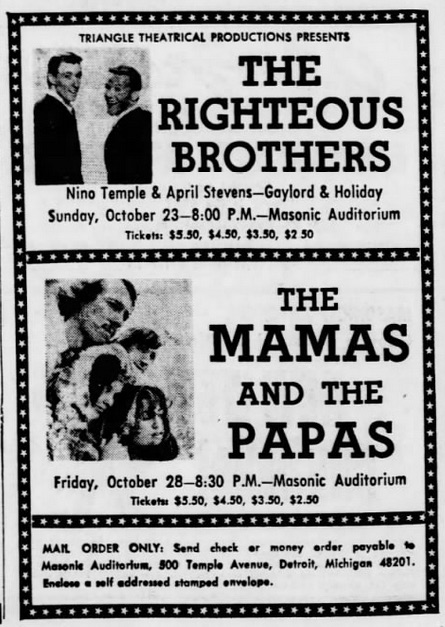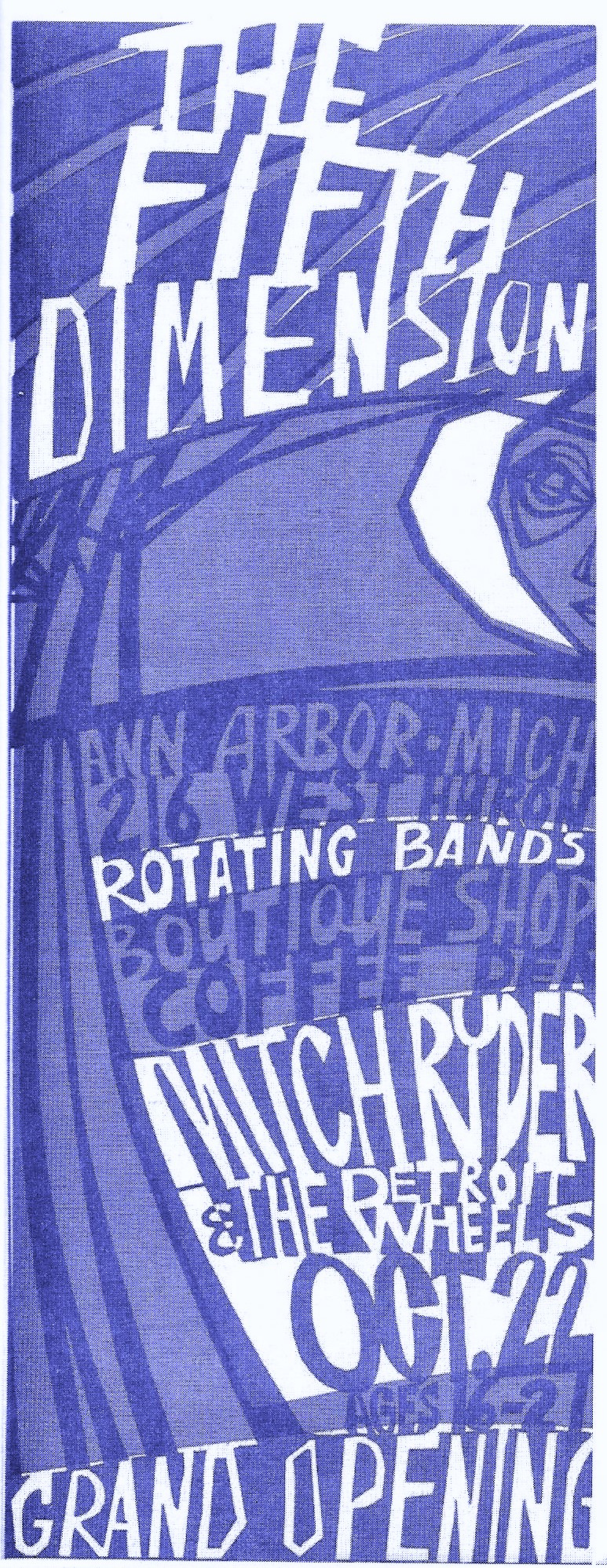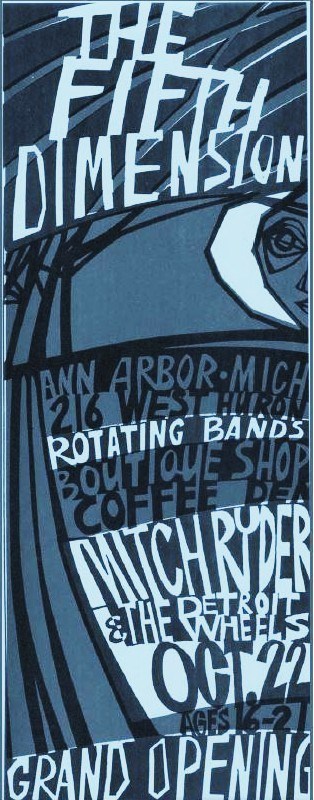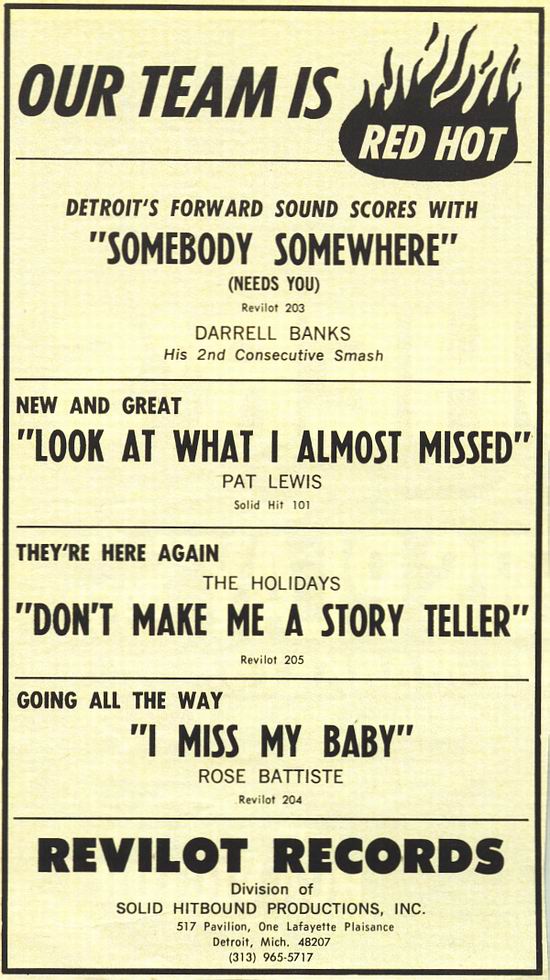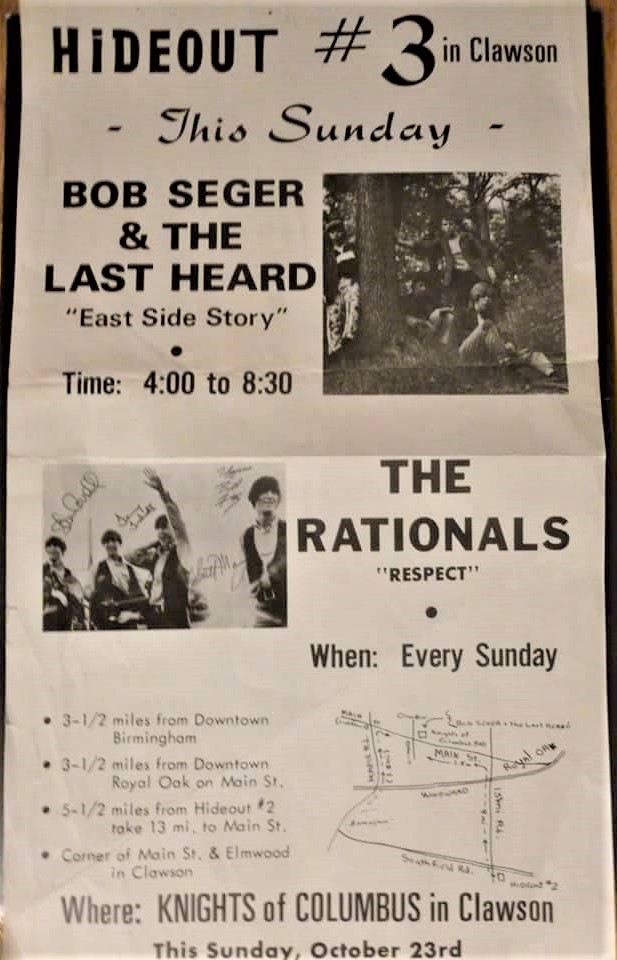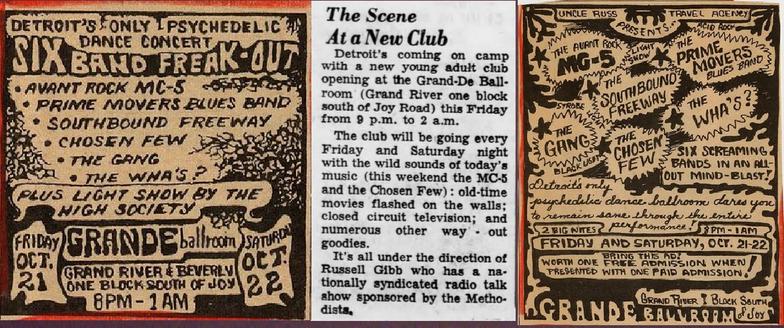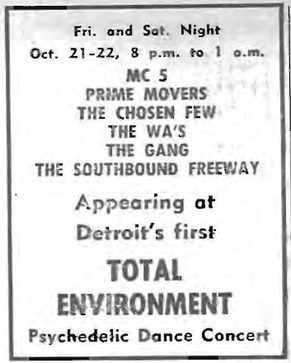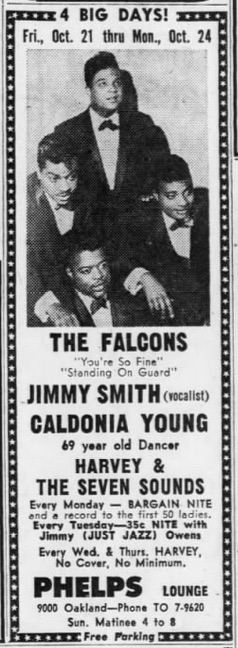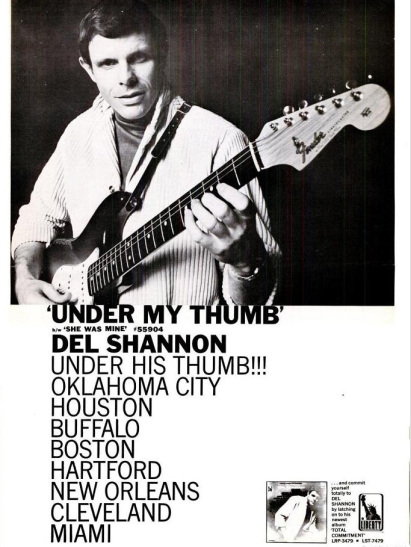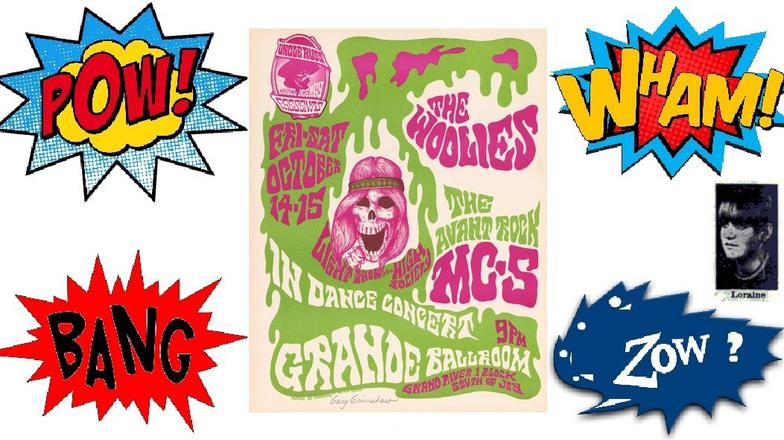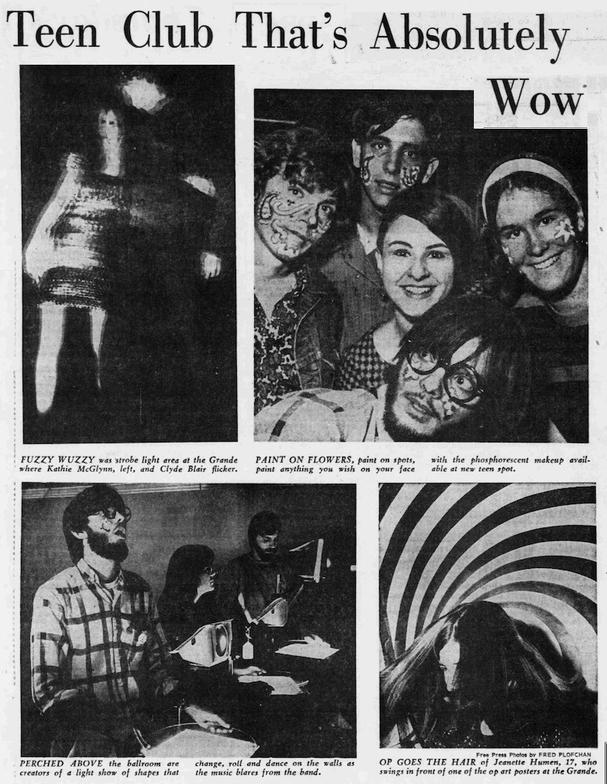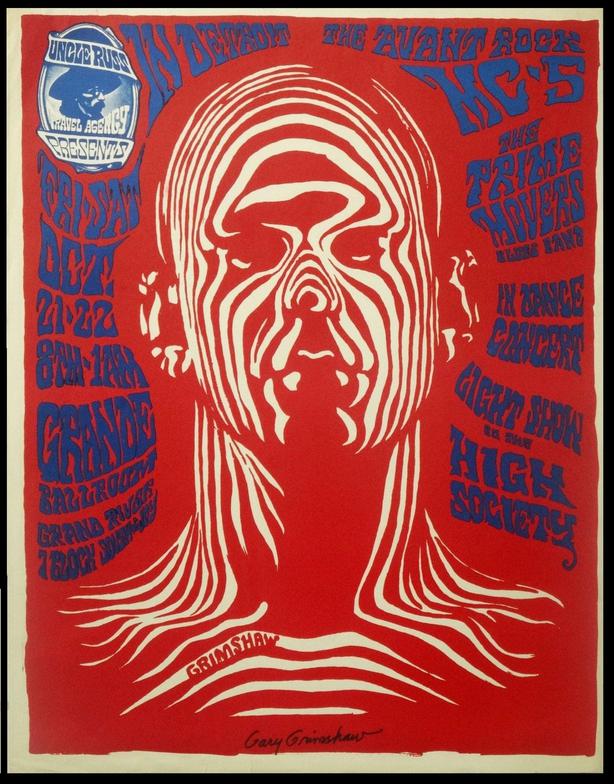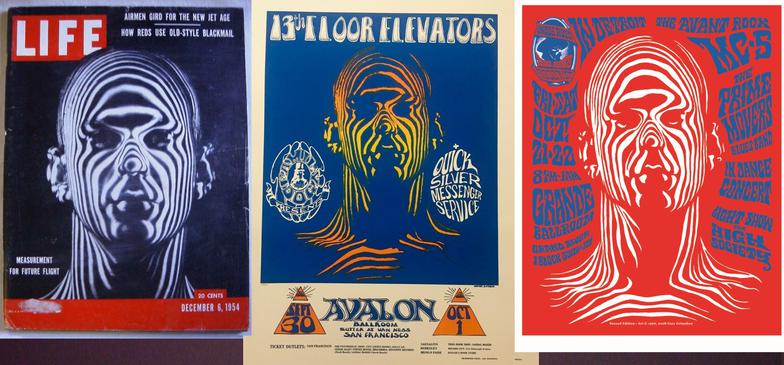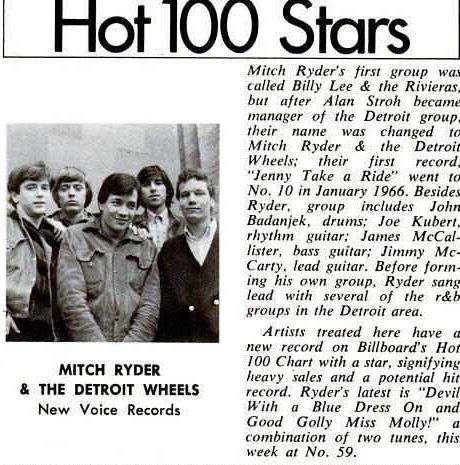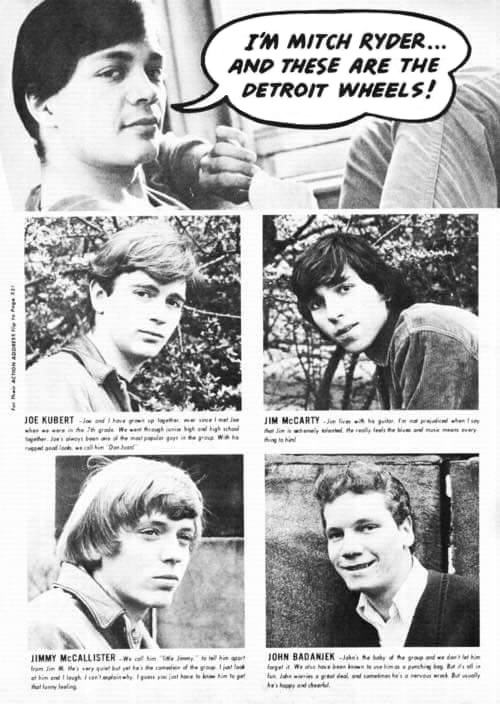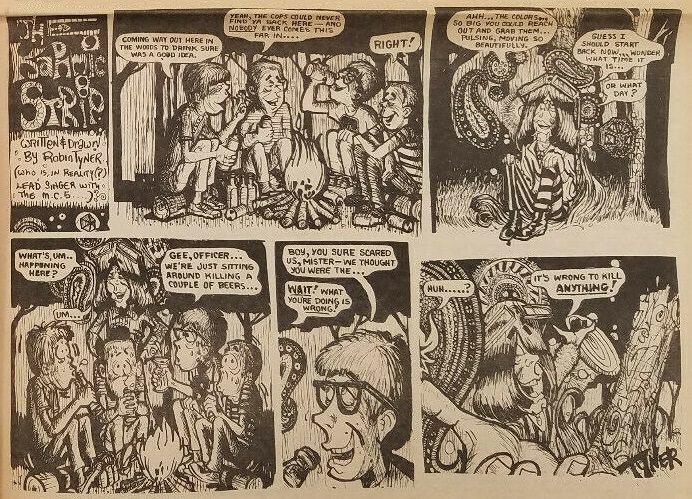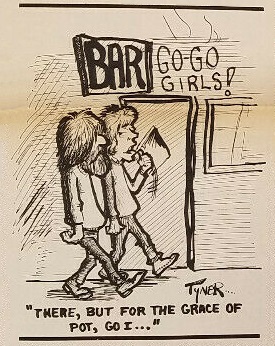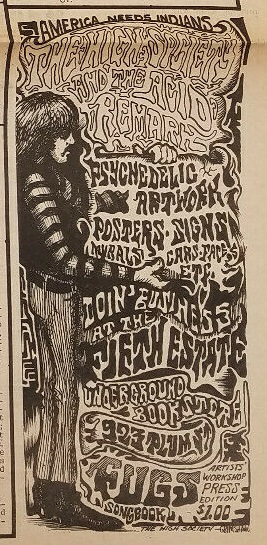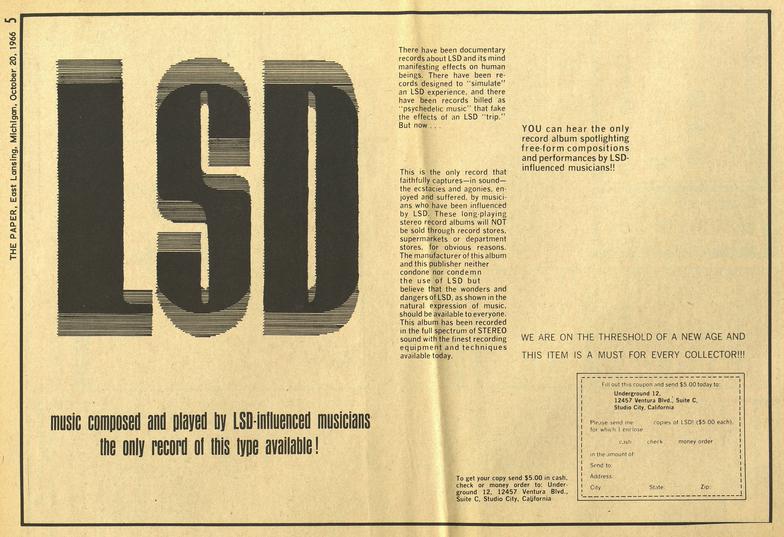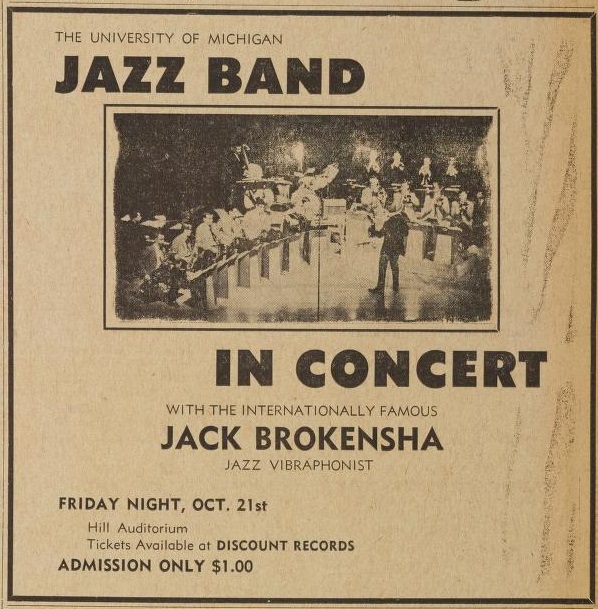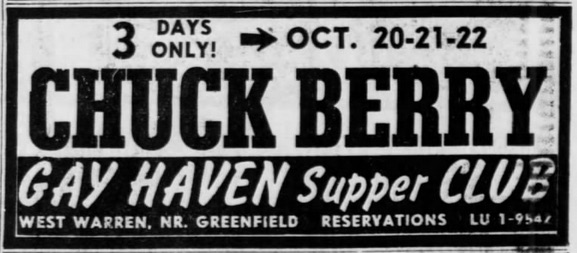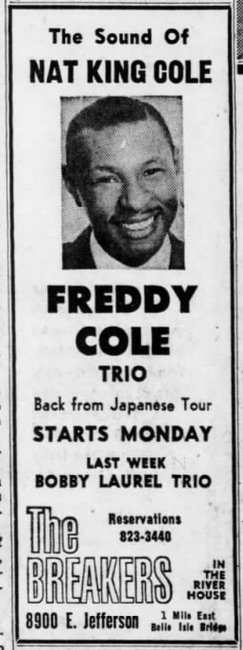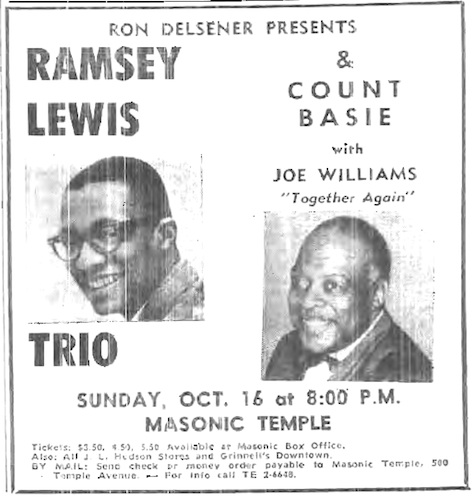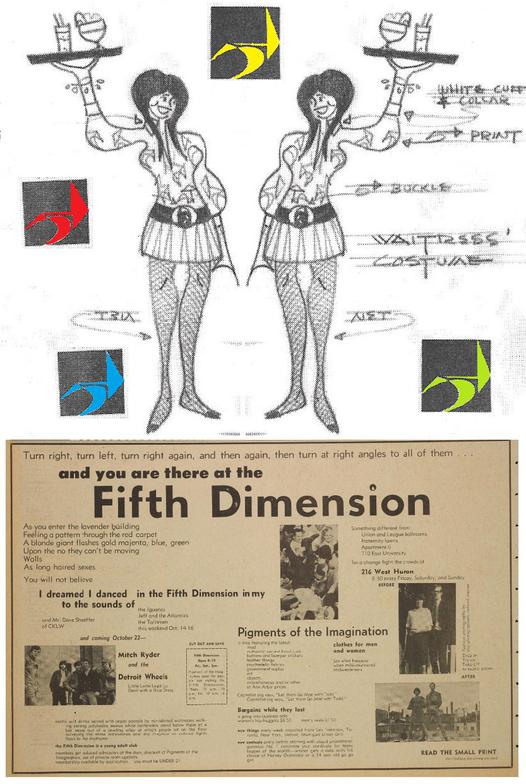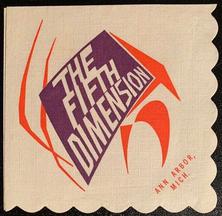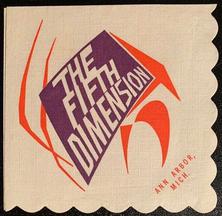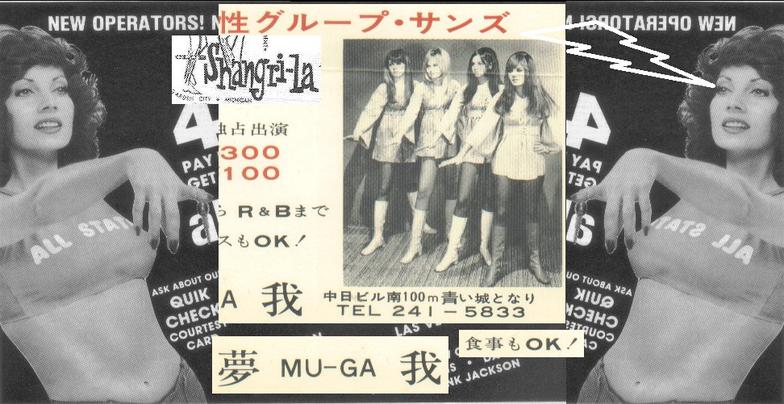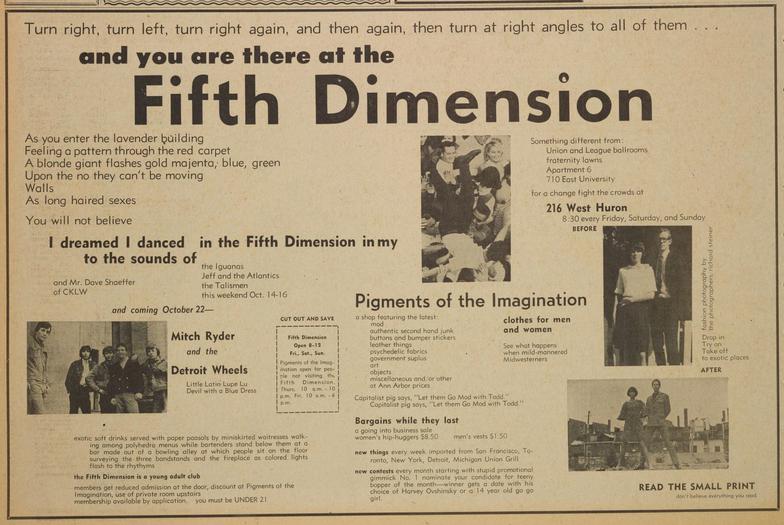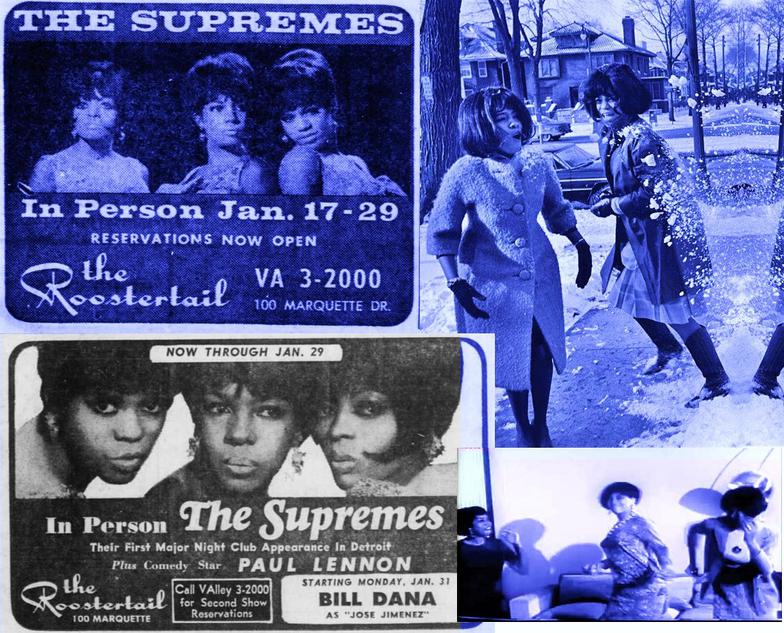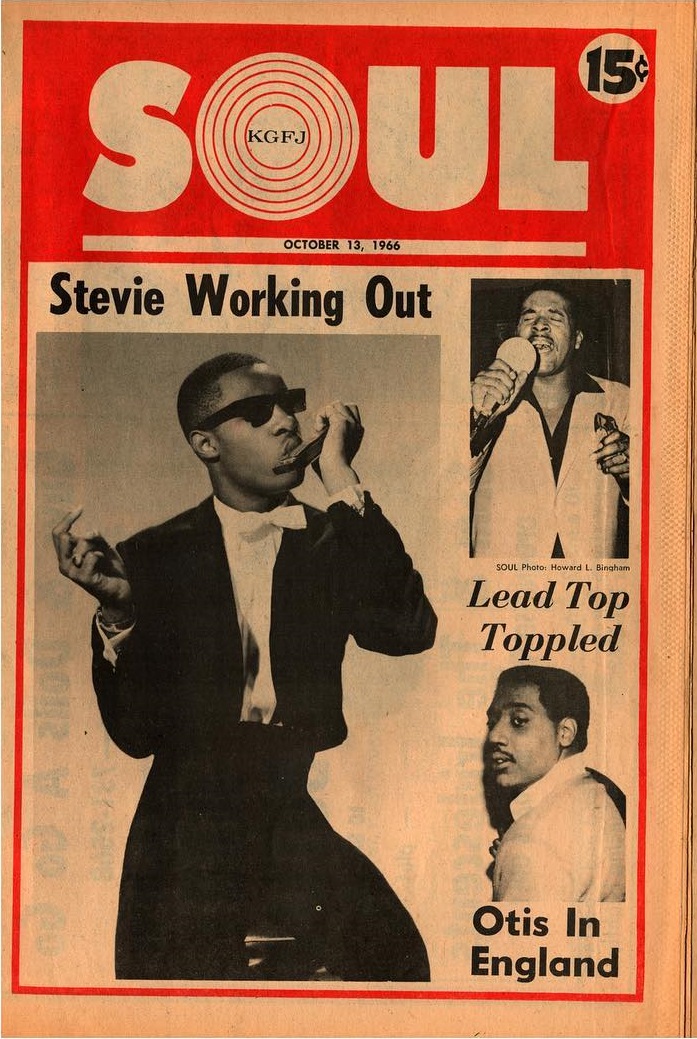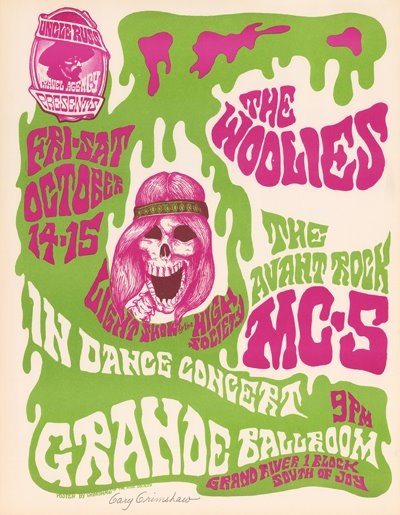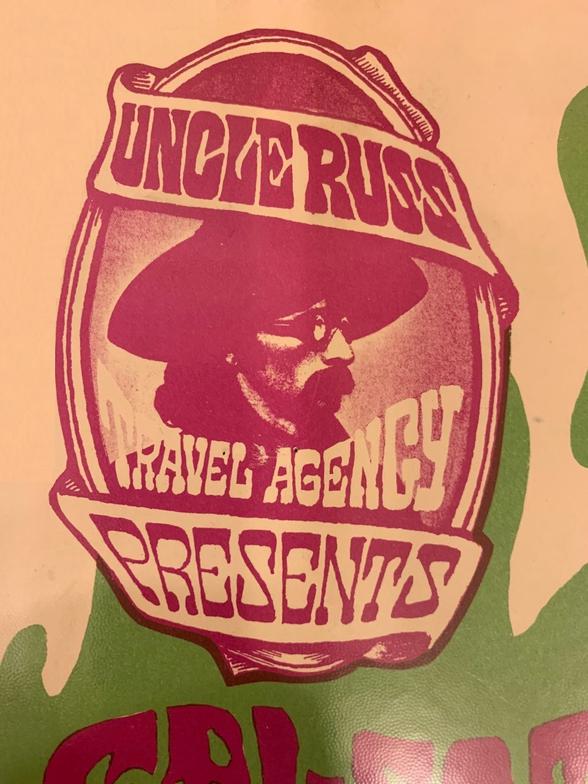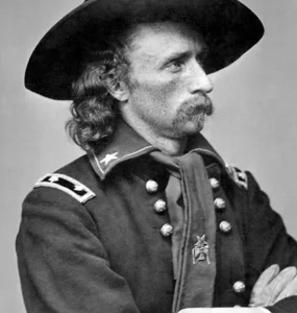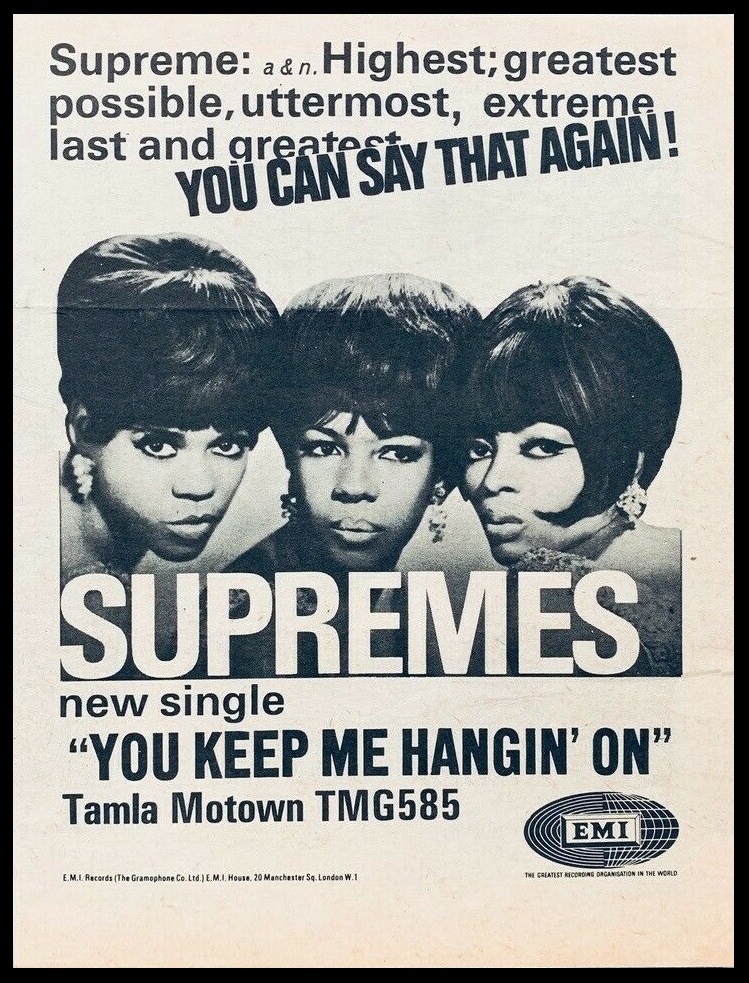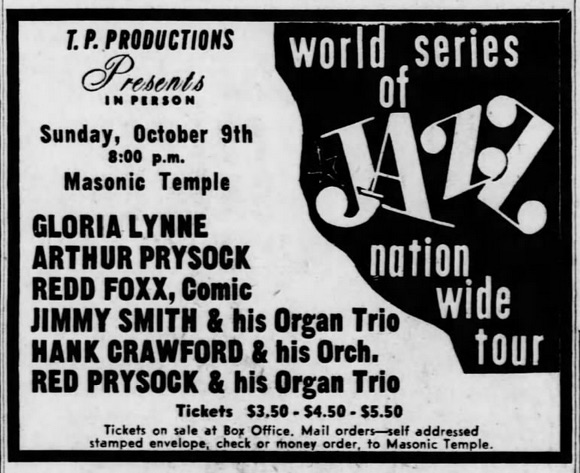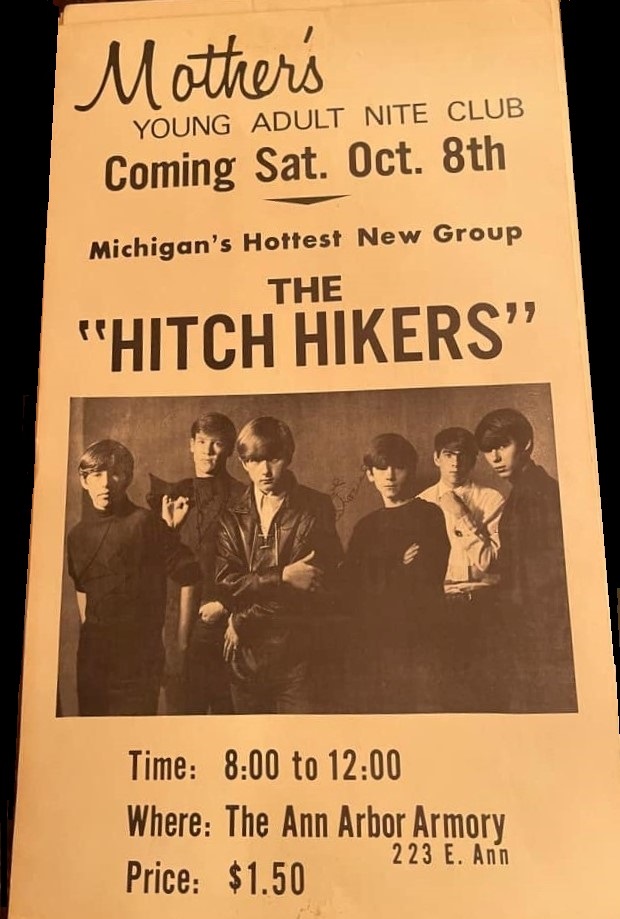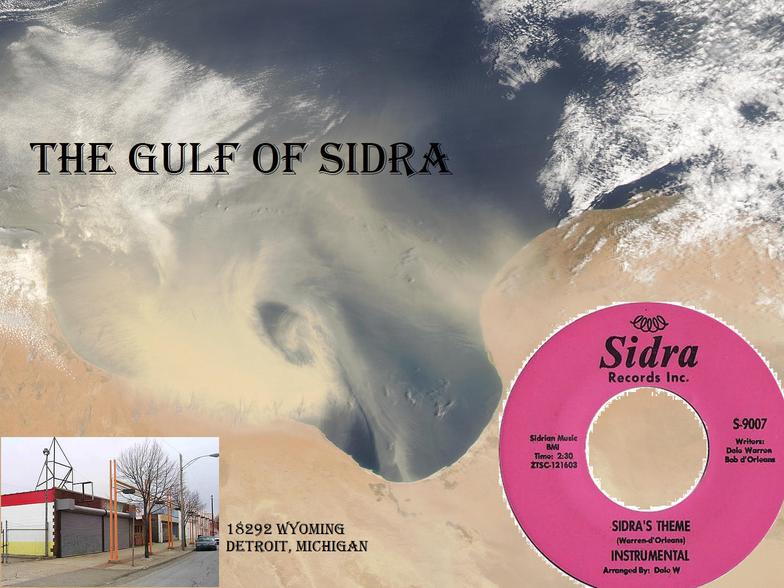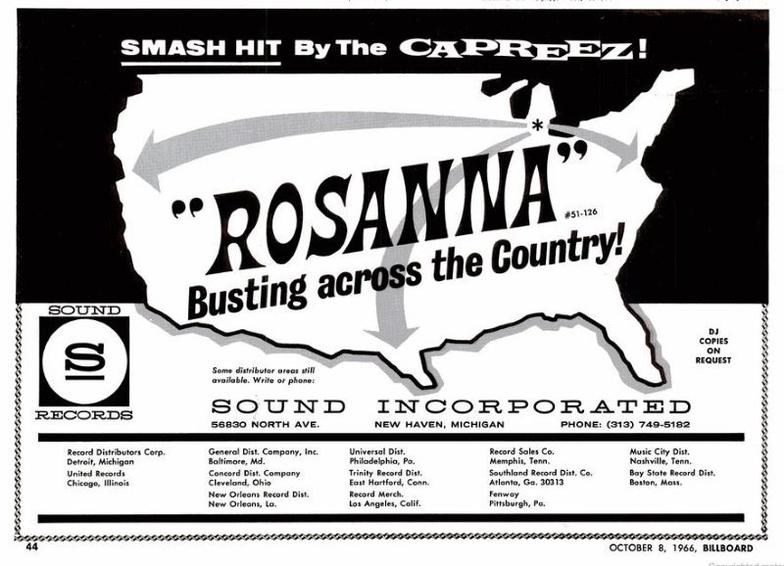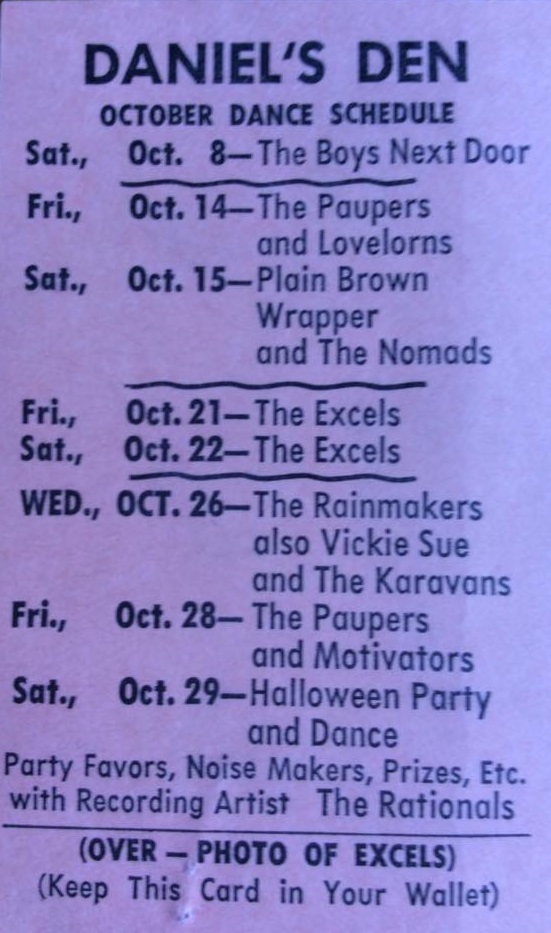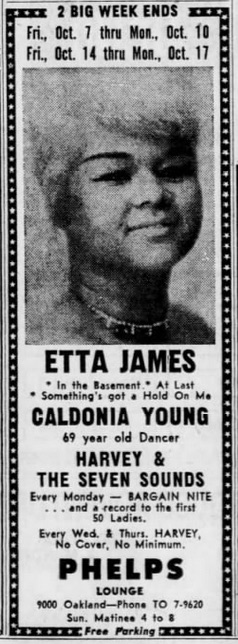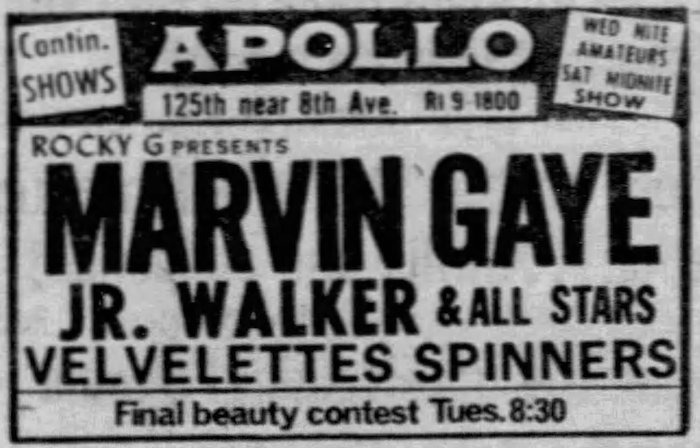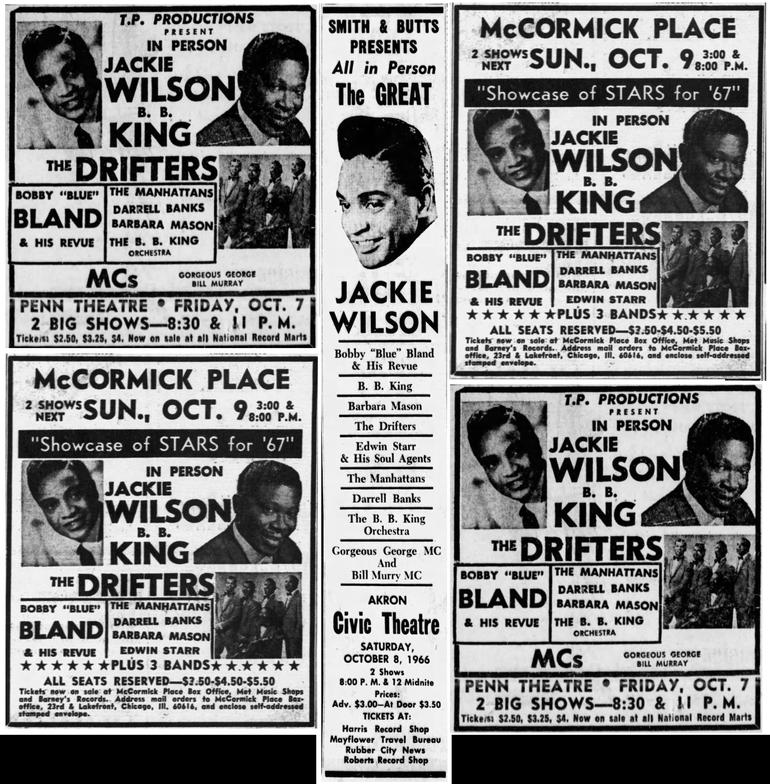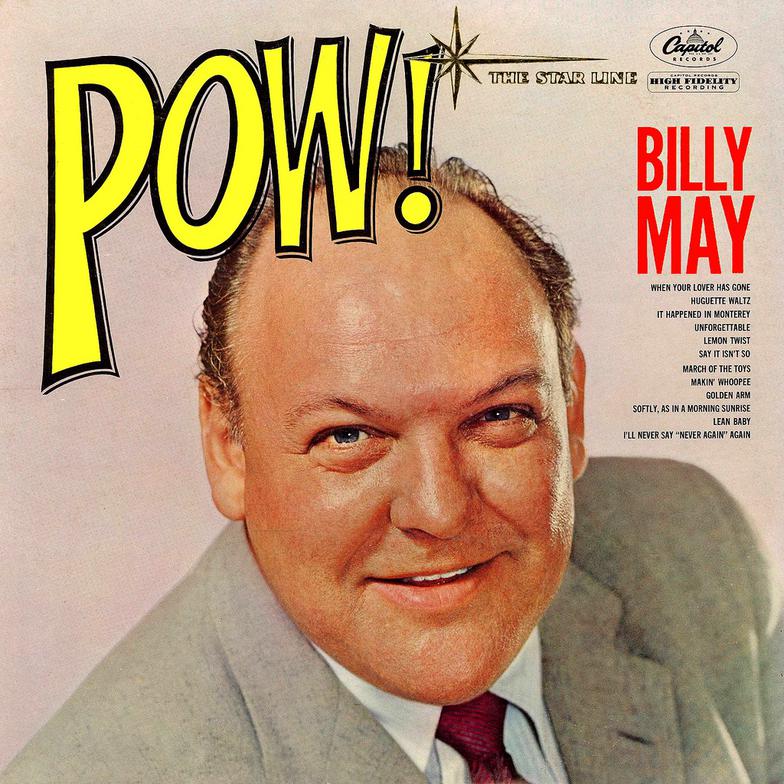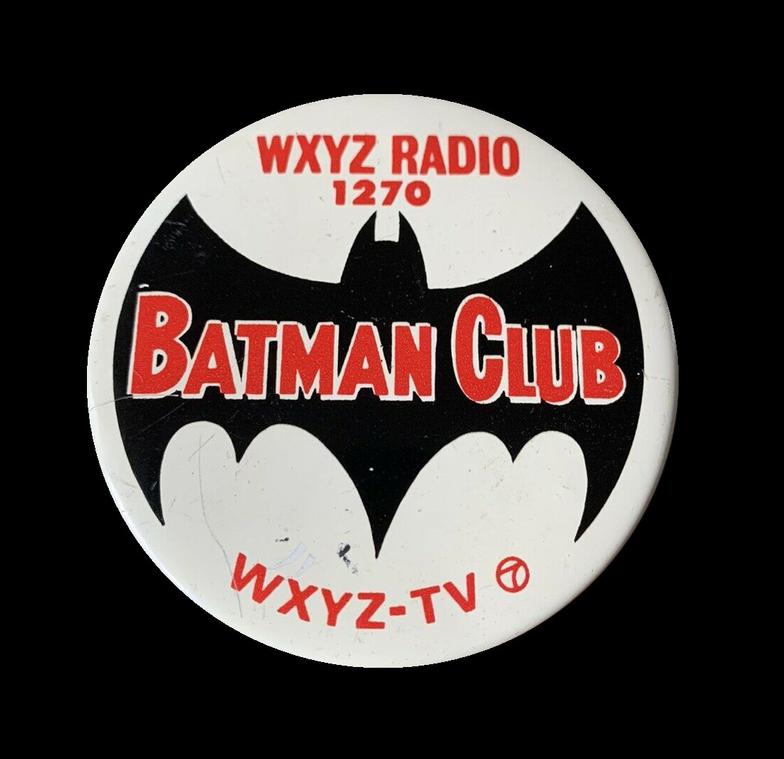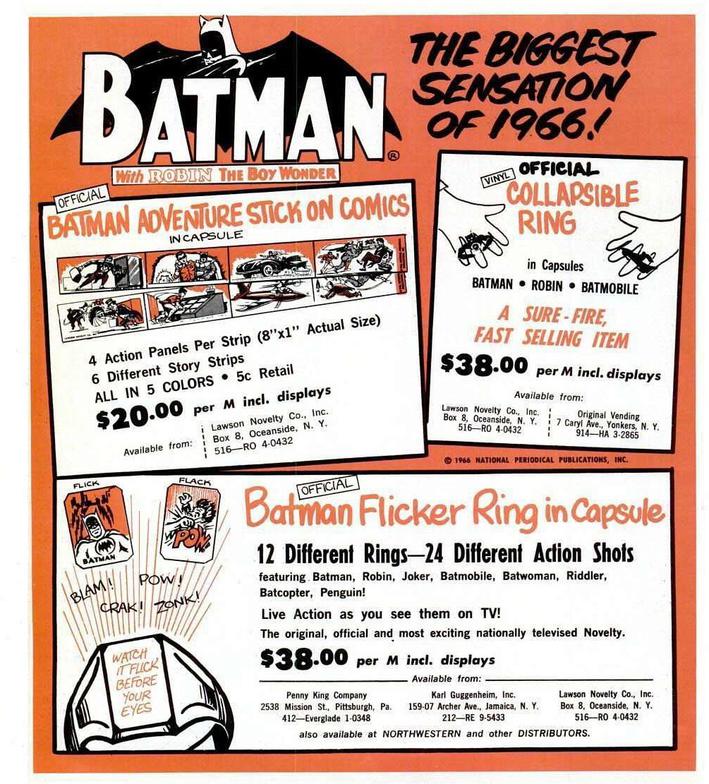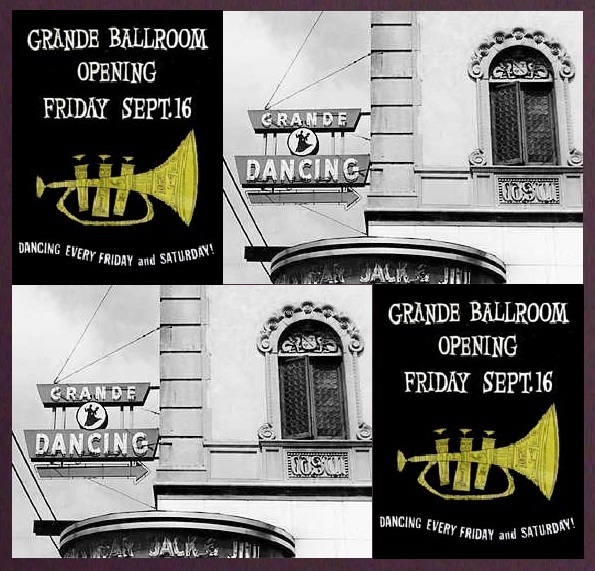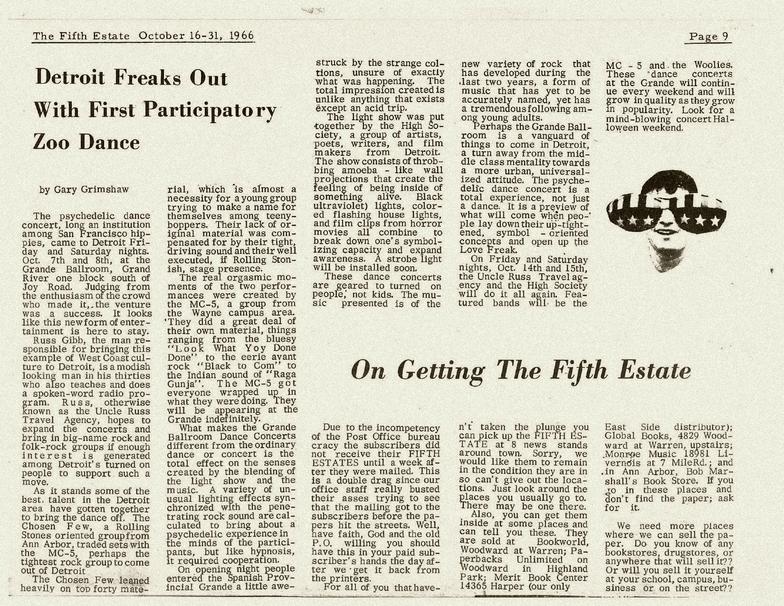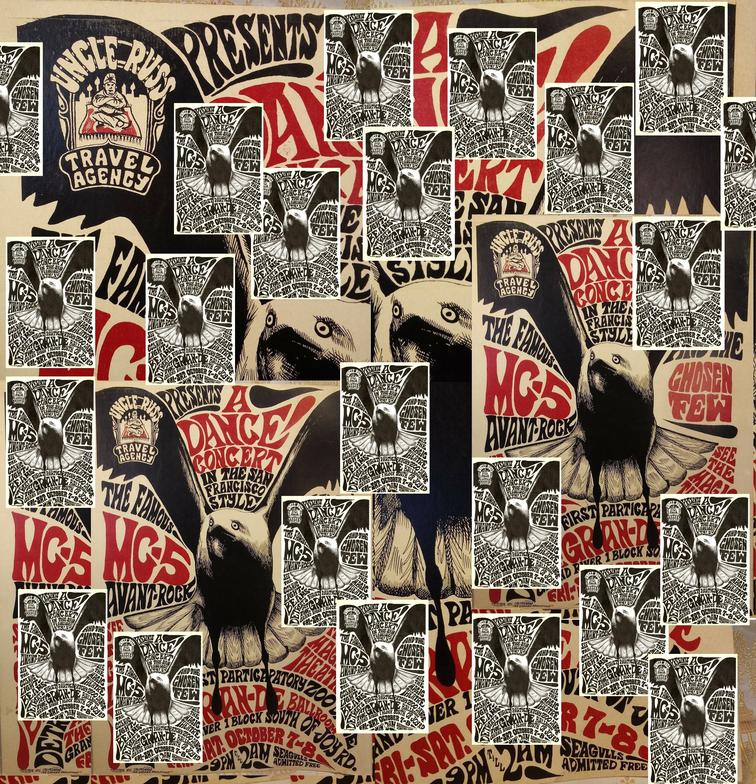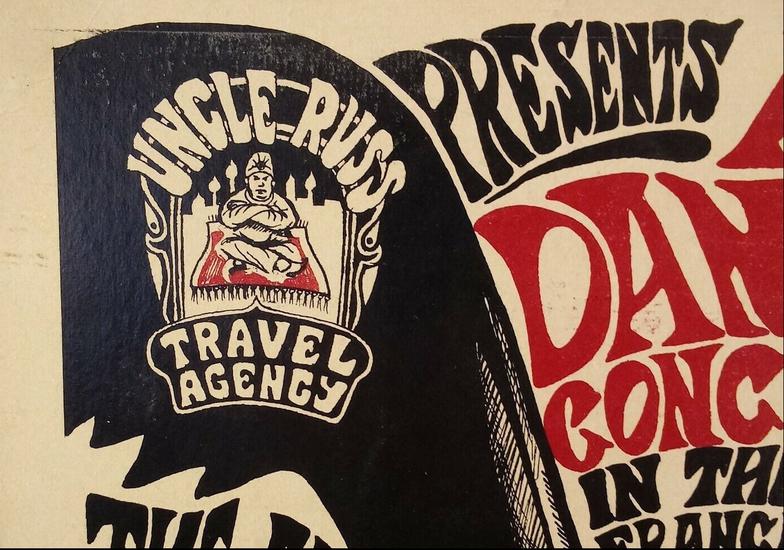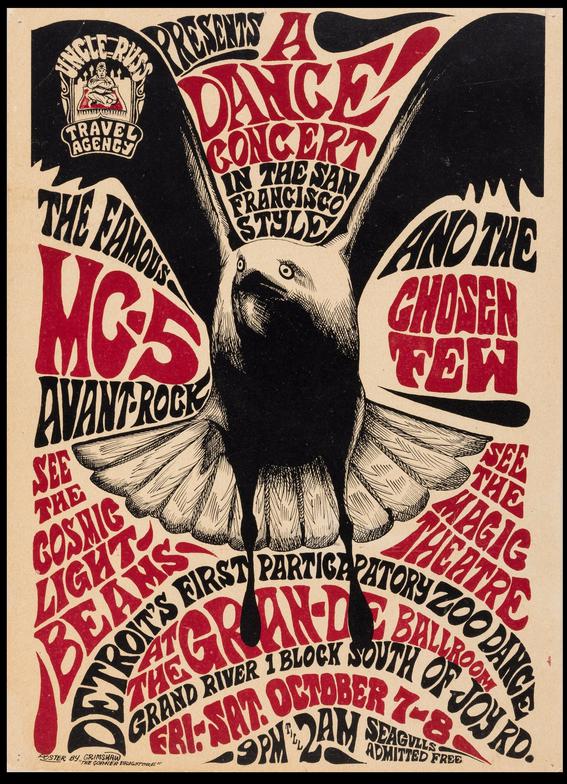Splatt Gallery
Double click here to add text.
Splatt Gallery's History of Michigan Music Posters
Volume Two - 1964-1966 - Page Eighteen
***********************************************************
Volume Two - 1964-1966 - continues - HERE
Ad for the Masonic Auditorium in Detroit, Michigan, with The Righteous Brothers on October 23, 1966, it was their fourth Michigan show, the first two had been opening for The Beatles at Olympia Stadium in The Beatles’ first Michigan shows in September 1964.
The following week, on October 28, The Mamas and The Papas made their first Michigan appearance, which appears to be their only Michigan show with Mama Cass. Their hit song “California Dreamin’” was the #1 single of the year on Billboard magazine’s Year-End List for 1966, although it never reached #1 on any of weekly charts. (The #2 song of the year was “96 Tears” by Michigan’s ? and The Mysterians.)
The Mamas and The Papas – California Dreamin’ (1965) - https://www.youtube.com/watch?v=3kcmwXUdDCE
The managers of The Fifth Dimension had booked Mitch Ryder & the Detroit Wheels for the Grand Opening on October 22, 1966 just before the band scored big with “Devil with a Blue Dress On” so they ended up with a great deal on the pre-arranged fee. After the first set, Ryder told them that the new club was “the second best” club they’d played and that the Cheetah Club in Chicago was better only because their stage was larger. During the set break, the managers pulled together more of the modular pods and expanded the stage to give Mitch plenty of room to prance around.
The poster for this show was created by Kramer Designs in Birmingham, Michigan, who also designed the club’s napkins, menus, and drink glasses.
Mitch Ryder & the Detroit Wheels – Devil with a Blue Dress On (1966)
https://www.youtube.com/watch?v=D-P3aFpnCFc
A Revilot Records ad from October 22, 1966 that includes the single “I Miss My Baby” by Rose Batiste. Having released over a half-dozen singles on labels such as Thelma, Golden Word, Ric-Tic, and Revilot, Batiste became a typist at Motown, eventually leaving the music business altogether, that is until decades later, when “I Miss My Baby”, and its flip-side “Hit & Run” became massive hits in the Northern Soul scene in England, bringing her, like so many others, at long last, the over-due recognition and appreciation, richly deserved.
Rose Batiste – I Miss My Baby (1966)
https://www.youtube.com/watch?v=cf70ZVlLNV0
Darrell Banks – Somebody (Somewhere) Needs You (1966)
https://www.youtube.com/watch?v=swzWiQciIFw
Pat Lewis – Look At What I Almost Missed (1966)
https://www.youtube.com/watch?v=CO61sOiKuTA
Bob Seger and The Rationals at Dave Leone’s Hideout #3 in Clawson, Michigan, October 23, 1966.
The word was starting to get around. There had been a brief announcement in the newspapers before the opening, but consensus is that only about 60 people attended the opening night at The Grande Ballroom. It is also said that attendance doubled the second night, but that’s still not much larger than a decent keg party.
For promoting the third weekend, October 21-22, 1966, a couple of ads appeared, believed to have been drawn by the MC5’s lead singer, Rob Tyner.
Although Gary Grimshaw’s “Zebra Man” poster only listed the MC5 and the Prime Movers Blues Band, Tyner’s flyers were billed as a “Six Band Freak-Out”, the line-up included the MC5, the Prime Movers Blues Band, Southbound Freeway, Chosen Few, the Gang, and The Wha?
Some of the bands that would become regulars made their first appearances on the Grande stage that weekend, including The Prime Movers and Southbound Freeway. The Chosen Few are listed again, following the opening night, but the band was in its final days, as Scott Richardson was about to team up with the Quackenbush brothers from The Fugitives to form SRC, and Ron Asheton was about to become a Psychedelic Stooge.
The MC5 – Looking At You (1966) - https://www.youtube.com/watch?v=nYi8wY9AJDg
Without mentioning the name, the Grande Ballroom, this newspaper ad is for the third weekend at “Detroit’s first Total Environment Psychedelic Dance Concert”, October 21-22, 1966, with the six-band line-up of the MC5, Prime Movers, Chosen Few, the Wha?, the Gang, and Southbound Freeway.
Newspaper ad for The Falcons at Phelps Lounge in Detroit, Michigan, October 21-24, 1966, also featuring Caldonia Young, 69 year old dancer.
Full-page ad in the October 22, 1966 issue of Billboard magazine for the release of Del Shannon’s 27th single.
OMG! That’s what our plucky teen scene reporter, Loraine Alterman, would say today. In her near-breathless review of the Grande Ballroom published in the October 21, 1966 edition of the Detroit Free Press on the third weekend of operation, poor Loraine cannot contain her excitement over the new venue, going so far as to make up her own words (op-pop?) and sound effects (Zow!?). Here’s some of what she had to say:
"Pow! Wham! Bang! Zow! That's how the new op-pop scene at the Grande Ballroom hits you. No doubt about it - it's the grooviest, most exciting teen night spot in town."
“Dig the scene. You enter by walking up a wide staircase. On the landing a ticket taker is perched on a motorcycle. Next to him are pots of phosphorescent make-up. Paint a big flower on your face or stripes on your hands. When you get inside, they’ll glow in alive pinks, greens, (and) blues.”
“Step up a few more stairs. The wild vibrant sounds of today’s music hit you…and hits with the force of a blast furnace. To borrow a phrase from Murray the K, it’s what’s happening baby.”
“Huge multi-color bubbles and amoeba-like shapes are changing, rolling, dancing on the walls. Fantastic! OK, that’s the walls. Suspended from the ceiling are two movie screens. On them are old-time silent films, new-time artsy films, slides on top of films. Like wow!”
“Step into another area of the ballroom and you’ll be flickering just like you are in one of these ancient silent movies. What is it? A strobe light area and the strobe produces these zany effects. I don’t mean to sound like a press agent for the place, but…if you’re 17 or over and don’t hit the Grande…you are out of your skull.”
By the way, Loraine Alterman (photo above) whom we will see again, has quite a fascinating life story.
Photos from inside the Grande Ballroom by Detroit Free Press photographer Fred Plofchan that accompanied Loraine Alterman’s story in the October 21, 1966 edition of the paper. The shots would have been taken on the previous weekend, the second weekend of operation for the Grande, October 14-15, which was also the premier of Gary Grimshaw’s “Light Show by the High Society”. Grimshaw can be seen on the right-hand side of the photo in the lower left.
The third weekend of the Grande Ballroom, October 21-22, 1966, and the third poster by Gary Grimshaw, sometimes referred to as “the Zebra Man”.
The MC5 and the Prime Movers from Ann Arbor performed both nights. This was only the second gig for the Prime Movers since drummer Iggy Osterberg had departed, replaced by Tom Ralston and soon after, by Jesse Crawford, future “Brother J.C.”, founder of Zenta “religion” and MC for the MC5.
Although Gary Grimshaw’s “Zebra Man” poster only lists the MC5 and the Prime Movers Blues Band, the line-up for the weekend also included Southbound Freeway, Chosen Few, the Gang, and The Wha?
People often ask; where do these artists get their crazy ideas? The answer is from LIFE (magazine).
Coincidently, or not so coincidently, both Stanley Mouse and Gary Grimshaw used the cover photo from the December 6, 1954 issue of LIFE magazine for their next posters.
Mouse and Alton Kelley used it for the Family Dog’s 13th Floor Elevators shows at the Avalon Ballroom in San Francisco, California, Sept 30/Oct 1, 1966, and Grimshaw used it for his third poster for the third Grande Ballroom show three weeks later.
The 13th Floor Elevators – She Lives in a Time of Her Own (1967)
https://www.youtube.com/watch?v=jrl9c15msZw
Mitch Ryder & the Detroit Wheels were highlighted as the “Hot 100 Stars” in the October 15, 1966 issue of Billboard magazine.
A photo profile of Mitch Ryder & the Detroit Wheels in a 1966 teen magazine.
A comic strip, called “The Karmic Strip” written and drawn by Robin Tyner, lead singer with the MC5, in the October 16, 1966 issue of the Fifth Estate newspaper in Detroit, Michigan.
Another cartoon by Rob Tyner, lead singer with the MC5, in the October 16, 1966 issue of the Fifth Estate newspaper in Detroit, Michigan.
An ad by Gary Grimshaw in the October 16, 1966 issue of the Fifth Estate newspaper (Vol.1 No.16) in Detroit, Michigan that packs a lot of information into a small space. At the top, it reads “America Needs Indians”, the title of a 1937 book by Hicala Iktomi that was used as a slogan on a few late ‘60’s posters.
The bulk of the ad promotes “The High Society and the Acid Remark” a business that provided “Psychedelic Artwork (for) Posters, Signs, Murals, Cars, Faces, Etc.” They were “Doin’ Business at the Fifth Estate Underground Book Store (at) 923 Plum St.”
It also throws in a plug for the “Fugs Songbook Artists’ Workshop Press Edition $1.00”. At the bottom, it is signed “The High Society – Grimshaw”. The High Society was also the name of Gary Grimshaw’s light shows which he had premiered on the second weekend of operation of the Grande Ballroom in the two days prior to this ad.
Advertisement in the October 20, 1966 issue of The Paper in East Lansing, Michigan.
University of Michigan Jazz Band with special guest Jack Brokensha at Hill Auditorium in Ann Arbor on October 21, 1966.
An ad for Chuck Berry, returning to the Club Gay Haven in Dearborn, Michigan, October 20-22, 1966, just two months since his last gig at the club in August.
An ad for Nat King Cole’s brother Freddie at The Breakers in Detroit for 24 shows, October 17, 1966 through November 12th. Freddy had also started off the year at Breakers with 13 shows in January. These shows were Cole’s last Michigan appearance until 1980. This appears to the end of Breakers as well with Cole’s gigs the only known shows for the venue.
An ad for Ramsey Lewis and Count Basie at Masonic Auditorium in Detroit on October 16, 1966.
During the second weekend of the Grande Ballroom, October 14-15, 1966, a new club opened in Ann Arbor, called The Fifth Dimension. Its first weekend was a dry-run "sneak preview" for friends and supporters of the owners, featuring Jeff & The Atlantics, the Iguanas (post Iggy) and the Talismen (pre-Brownsville Station), hosted by Dave Shafer of CKLW. The Fifth Dimension was a converted bowling alley that had been turned into a psychedelic playpen, with no detail, right down to the waitress’ uniforms, overlooked.
Jim Hall, who owned a painting and construction business with his two brothers in Garden City, Michigan, had taken notice of the success that Peter Andrews was having at Mothers, the old armory building where he was holding teen dances in Ann Arbor. The Halls bought the 20th Century Lanes Building a couple of blocks away from Mothers and hired architect Richard Ahern, to design its conversion into a mod show club.
Ahern eagerly took the project as an opportunity to experiment with angular, multi-level interior construction, creating an interesting and functional maze, with modular triangular pods that could be used to expand the stage and sections of the dance floor, integrated bench seating, a sunken soda bar, and an adjoining head shop and lounge (and the aforementioned waitress uniforms). He also designed the distinctive 5-D logo for the club's name, The Fifth Dimension.
By comparison, Russ Gibb had a relatively easy time converting an existing ballroom into his new ballroom (basically some paint and a disco mirror ball).
Jeff & The Atlantics, from Inkster, Michigan hailed from the Walled Lake Casino glory days and were the backing band on soul star, Gino Washington’s hit singles. They appear to have only made one recording under their own name, on Sound Patterns Records, which also featured a cool-sounding female singer, Cathe Garcia. Cathe became a school teacher, but the rest of the band are still around, playing the oldies, to this day.
Jeff & the Atlantics featuring Cathe – I’ll Find Him (1966)
https://www.youtube.com/watch?v=rlJxCfW6Bsg
To manage their new club, the Hall's enlisted Joe Slaga, who operated a dance club, called The Shangri-La in Garden City, Michigan. Slaga turned over the Shangri-La to Dick Mills who managed a popular girl-group called The Debutantes that had been formed by Jan McCellan and high school friends. Dick Mills, who is also the father of drummer KJ Knight, turned out to be unsuccessful and an ill-fated four-month tour of Southeast Asia (of all places) in 1969 put an end to The Debutantes.
Jan McCellan moved to Las Vegas and became a very successful singer, actress and model (yes, that’s her in this Allstate ad), and an ardent animal rights activist (she despises Ted Nugent and has plenty of dirt to dish from the days when they were in competing teenage combos). She’s our new gorgeous hero.
The Debutantes – A New Love Today (1966) - https://www.youtube.com/watch?v=sEVMK9RF3R4
A rather verbose ad for the Fifth Dimension club in Ann Arbor, Michigan describing, among other things, opening weekend concerts, October 14-16, 1966 with Jeff & the Atlantics, the Iguanas (post Iggy) and the Talismen (pre-Brownsville Station), hosted by Dave Shafer of CKLW, an upcoming appearance by Mitch Ryder & the Detroit Wheels, and a contest prize to win a date with Harvey Ovshinsky.
In 1966, The Supremes invented slam dancing in this promo film for their second #1 hit of the year (and their eighth so far).
The Supremes – You Keep Me Hanging On (1966) - https://www.youtube.com/watch?v=CI5WyhTEwW0
Stevie Wonder on the front cover of the October 13, 1966 issue of SOUL magazine.
The second weekend of the Grande Ballroom, October 14-15, 1966, and the second poster by Gary Grimshaw. It is also the premier of Grimshaw’s “Light Show by the High Society”.
Sharing the two-night billing with the house band, the MC5, were the Woolies from Lansing, Michigan. The concert database also has the band Southbound Freeway appearing on the second night.
The Woolies were the recent winners of the Vox Battle of the Bands at the Michigan state fairgrounds. First prize was a trip to Hollywood for a recording session where they cut a version of Bo Diddley’s “Who Do You Love” which became a regional hit.
The Woolies were the house band at a roadhouse outside Lansing, called The Dells, where they had the opportunity to serve as the backing band for a touring Chuck Berry. Berry liked the band so much that whenever he was touring the Midwest, he would say, ”Get me The Woolies”. They ended up touring with him for years and Chuck Berry’s 1971 album, “San Francisco Dues” was recorded with The Woolies at their Lansing Sound studio.
These two nights appear to have been the only time that the Woolies performed at the Grande Ballroom, except for the Dave Miller wedding in January 1970.
The Woolies – Who Do You Love (1966) - https://www.youtube.com/watch?v=SfgmaNPJXZo
Gary Grimshaw’s second poster for the Grande Ballroom introduced a new Uncle Russ logo that used a picture of General George Armstrong Custer, of “Custer’s Last Stand”, wearing Russ Gibb’s glasses. It would be used on his next dozen posters.
A full-page Tamla Motown Records ad in a British music newspaper for the single “You Keep Me Hanging On” by the Supremes, released on October 12, 1966. It became their eighth #1 on the Billboard Hot 100 singles chart.
An ad for the World Series of Jazz nation-wide tour at Masonic Auditorium in Detroit on October 9, 1966.
Poster/flyer for Mother’s in Ann Arbor, Michigan, with the Hitch Hikers (soon to become Thyme) on October 8, 1966.
Estimates have ranged from 40 to 400 record labels forming in Detroit in 1966, such as Sidra Records, founded by none other than Johnny Powers, whom we featured way, way back in 1957 as the only person who had a hit record for both Stax and Motown (remember?)
Powers had begun investing the profits from his rockabilly-star days into oil shares in the Gulf of Sidra and hence named the label, whose early releases were by the kids of co-owner Joe Casey, a brother-sister duo that went by the name of Ronnie & Robyn.
The best thing to be said of the singing siblings is that their best track, by far, is an instrumental.
The flip-side of their song “Blow Out the Candle”, features moonlighting Funk Brothers on a track that starts questionably with a plucked harp before bursting into a full-blown stomper, with a name the label was meant to capitalize, “Sidra’s Theme”.
But since we know our audience is a bit twisted, and will probably love this, here is the A-side, “Blow Out the Candle” as well (but we caution against going too much deeper into these darlings catalog).
Ronnie & Robyn – Blow Out the Candle (1966)
https://www.youtube.com/watch?v=Zh8jbwo-8Lw
Ronnie & Robyn – Sidra’s Theme (1966)
https://www.youtube.com/watch?v=BK7vuYG4y_c
Johnny Powers merged his Sidra Records with the Sound Incorporated conglomerate out of New Haven, Michigan. The myriad of labels that were connected included Universal Sound, Walker Records, Sound, Sound Inc., Velgo, IRM, and Trash, a label for “adults only” polka albums, such as “Polish Songs Mother Never Taught Us” by The Impalas.
The label scored a minor hit in 1966 with the soft ballad “Rosanna” by The Capreez, promoted by this ad in the October 8, 1966 issue of Billboard magazine, but we prefer their 1967 follow-up “Soulsation”, written and produced by Johnny Powers.
The Capreez – Soulsation (1967) - https://www.youtube.com/watch?v=9WcIOw0S-1M
Filling in the blanks for shows at Daniel’s Den in Saginaw, Michigan, here is the schedule for October 1966. Starting with the same weekend that Russ Gibb opened the Grande Ballroom in Detroit, The Boys Next Door performed at the Den on October 8, 1966, followed by The Paupers and Lovelorn, Plain Brown Wrapper and The Nomads, The Excels, The Rainmakers, also Vickie Sue and The Karavans, The Paupers and Motivators, wrapping up with a Halloween Party and Dance with The Rationals.
An ad for Etta James at the Phelps Lounge in Detroit for eight shows over two weekends, October 7-17, 1966.
An ad for the Apollo Theater in Harlem, NYC with a Motown show featuring Marvin Gaye, Jr. Walker & the All Stars, the Velvelettes, and the Spinners for seven nights, October 7-13, 1966.
Ads for the Jackie Wilson, BB King, and the Drifters tour, along with Michigan artists Darell Banks and Edwin Starr, in Pittsburgh, Pennsylvania on October 7, 1966, in Akron, Ohio on the following night, and in Chicago, Illinois the night after that.
At the time of the opening rock and roll show at the Grande, the extremely successful ABC-TV series “Batman” was starting its second season, and one the old ballroom’s long-ago stars, Billy May, had another of his greatest hits.
Billy May – Batman Theme (1966)
https://www.youtube.com/watch?v=GewJBonH2EQ
As it says in the ad, Batman was “the biggest sensation of 1966!”
Postscript to the opening night at The Grande Ballroom.
Posters announcing “The Grande Ballroom Opening – Friday Sept. 16” with a simple drawing of a bugle were found. Coincidentally, September 16th did fall on a Friday in 1966 (as it had in many years since the twenties), prompting stories that the original opening had been delayed.
However, as described above, Russ Gibb was having his mind blown by The Byrds at The Fillmore in San Francisco on September 16, 1966, and Gibb has explained that they had found a box of these when they took over the ballroom. They have been identified as being printed in 1955 during one of the ballroom’s periodic resurgences. Gibb has said that they just pinned them up all over the walls and they eventually disappeared. The final vestiges of the glory days of the ballroom era of the past, ripped down and scattered to the wind.
Not only did artist Gary Grimshaw create the first poster for the Grande Ballroom, but he also provided a first-hand account of the venue’s first weekend, in extensive detail, published in the October 16-30, 1966 issue of the Fifth Estate newspaper, titled “Detroit Freaks Out With First Participatory Zoo Dance”.
The above scan should be quite legible, so you can hear it in Gary’s voice. He describes the performances by the Chosen Few and MC5, the opening night audience, and details of the light show, which he co-created, humbly described as “put together by the High Society, a group of artists, poets, writers, and film makers from Detroit”.
He certainly clears up the question of whether the Chosen Few opened the first show, a question that comes up in the following narrative, which we will keep in place for its interesting aspect on the role of memory.
But GARY WAS THERE, and for the five minutes or so that it takes to read his words, he is here again.
There was some question as to whether the Chosen Few appeared at the opening night show as they were in the process of breaking up at the time, although Gary Grimshaw’s review of the opening night ultimately confirms the Chosen Few appearance. Daniel O’Connell, with the band The Wha?, tells the story of being enlisted by Russ Gibb to fill in as the opening act. A story that will make modern day poster collectors cringe:
"Dempster (fellow band member) and I met Russ Gibb at Northland about one or two weeks before the Grande's first night. He had reams and reams of those "Seagull posters". Gibb was handing them out at Northland, he hustled us, or we hustled him, into being an opening act for the first night ....perhaps it was the second night a Saturday...... in any event it was to my recollection because the Chosen Few had broken up and canceled the show...."
"So, Russ Gibb gave us heaps and heaps of those "Seagull" posters..... so many I covered my entire bedroom wall with them...... still had stacks of them to staple in the basement, write notes to my parents on, paper airplanes....... not one of them survived! Had to pay 50 bucks for a re-issue by Gary Grimshaw two years ago!" (written in 1999).
A close-up of the “Uncle Russ Travel Agency” logo on the first Grande Ballroom poster, with a genie on a flying carpet. It would not be used again.
The poster that Gary Grimshaw made for the opening weekend at The Grande Ballroom, October 7-8, 1966 is an enduring classic with lettering flowing effortlessly around the image of a seagull taking flight. The nickname “Uncle Russ” had already been bestowed on Russ Gibb, who was a good ten years older than everyone he had gathered around him, and the light-hearted “Uncle Russ Travel Agency” logo was a nod to the “Bill Graham Presents” titles on the Fillmore posters.
The poster carried a lot of text, promising a dance concert “in the San Francisco stye” with “cosmic light beams” and a “magic circus”. It was billed as “Detroit’s First Participatory Zoo Dance” and, beginning a series of gimmicks for free admission, Seagulls were “admitted free”.
It was signed “Poster by Grimshaw” and “The Corner Drugstore”.
The bands that performed on the opening weekend, October 7-8, 1966, were the MC5, the Chosen Few, and The Wha?. The MC5, true to their agreement with Russ Gibb, would use the Grande as their rehearsal space and in effect became the “house band”. They performed more than 100 shows at the Grande during the Grande’s rock and roll years, an order of magnitude well above any other act.
Although the roots of the MC5 go back to 1963, the final line-up had been together for only about a year when the Grande Ballroom opened. Before the year was over, they would make their first recordings, resulting in their debut single, released in March 1967.
The MC5 – I Can Only Give You Everything (1967)
https://www.youtube.com/watch?v=uBnUeZY2lrI


